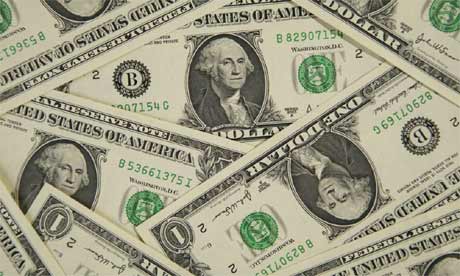Traces of cocaine found on up to 90% of dollar bills in American cities
by Ed Pilkington in New York

Photograph: Getty/Piet Mall
It’s an image much beloved of Hollywood directors: the head lowered over a mirror, a crisp greenback tightly rolled and inserted in a nostril, then applied at the other end to a line of white powder.
Researchers from the American Chemical Society in Washington have discovered that the practice of consuming cocaine through rolled up paper money is far more than just a cinematic cliché. They found that in big cities in the US, up to 90% of the notes tested positive for traces of the drug.
In Washington itself, the percentage of notes with cocaine residue reached 93%, a prevalence almost matched by other urban areas such as Boston, Detroit and Baltimore.
Any film directors hoping to be authentic in their portrayal of cocaine snorting should note that the researchers found that in the US the bills of choice of cocaine consumers were $5, $10, $20 and $50. Both the modest dollar note, and the more elusive $100 note appear to be rarely deployed as an aid to nasal intoxication.
